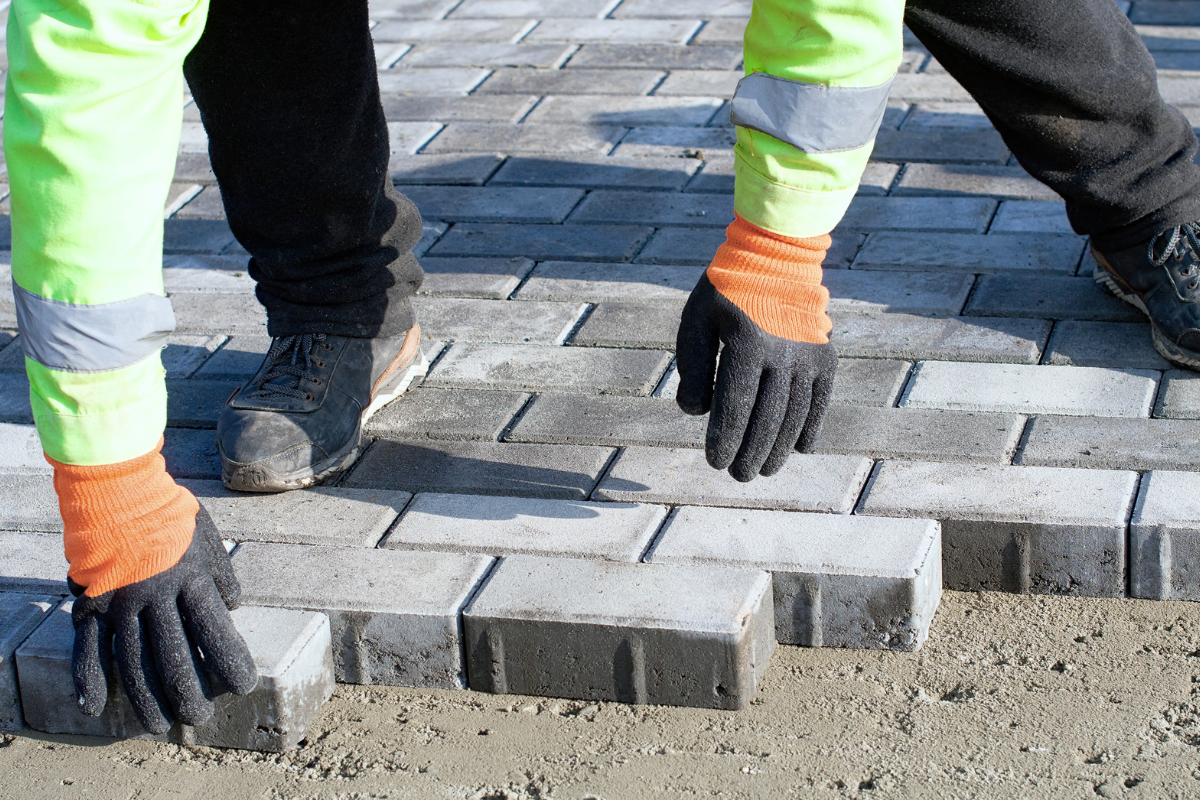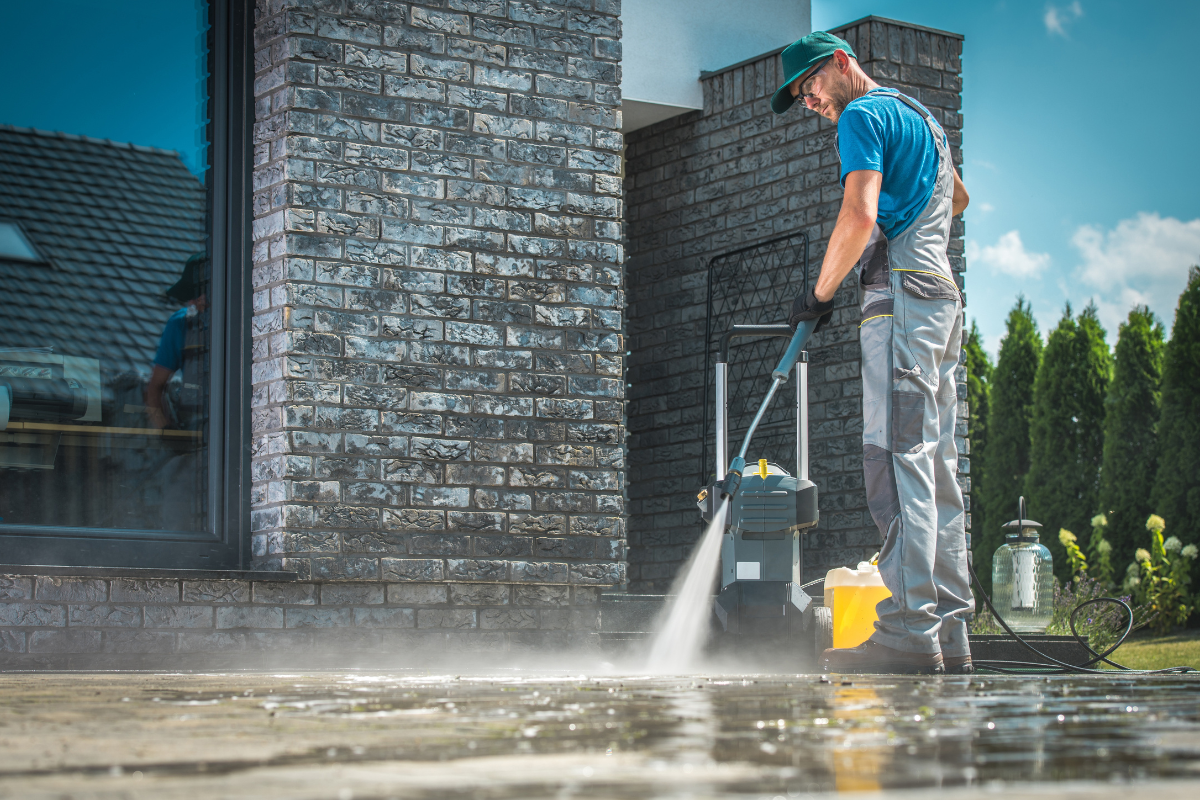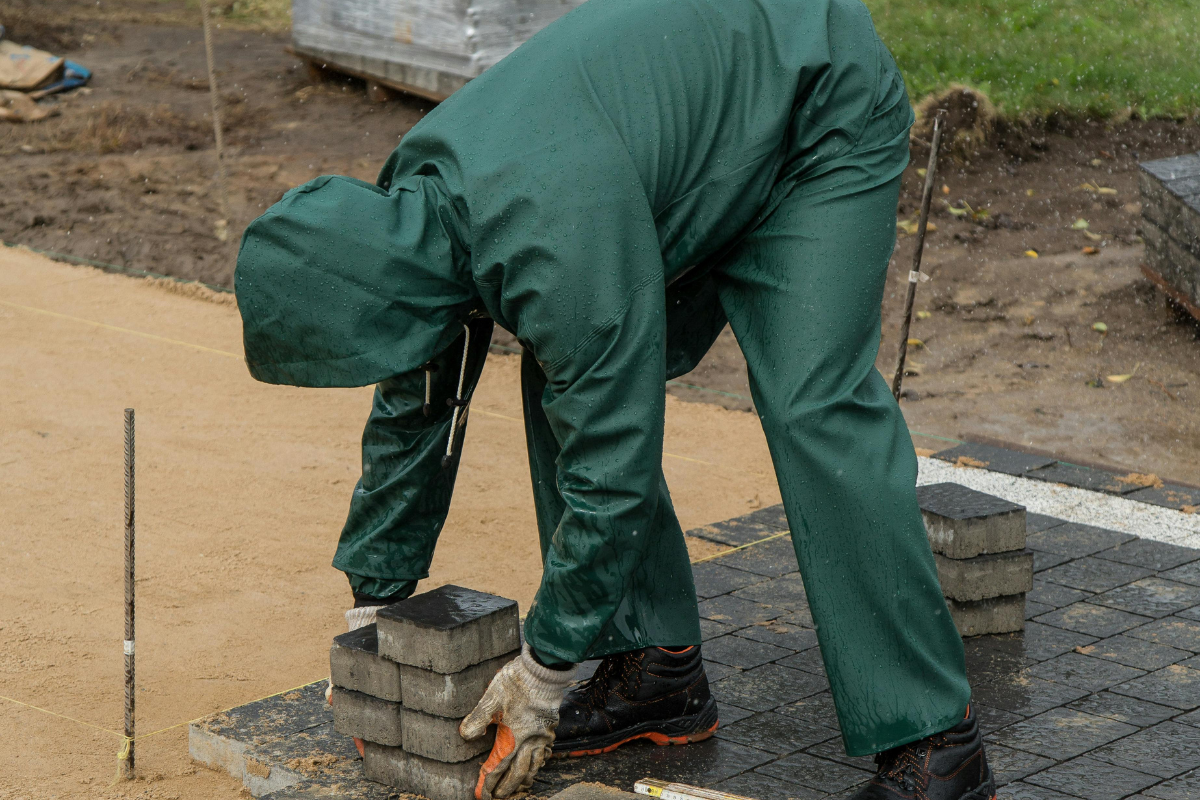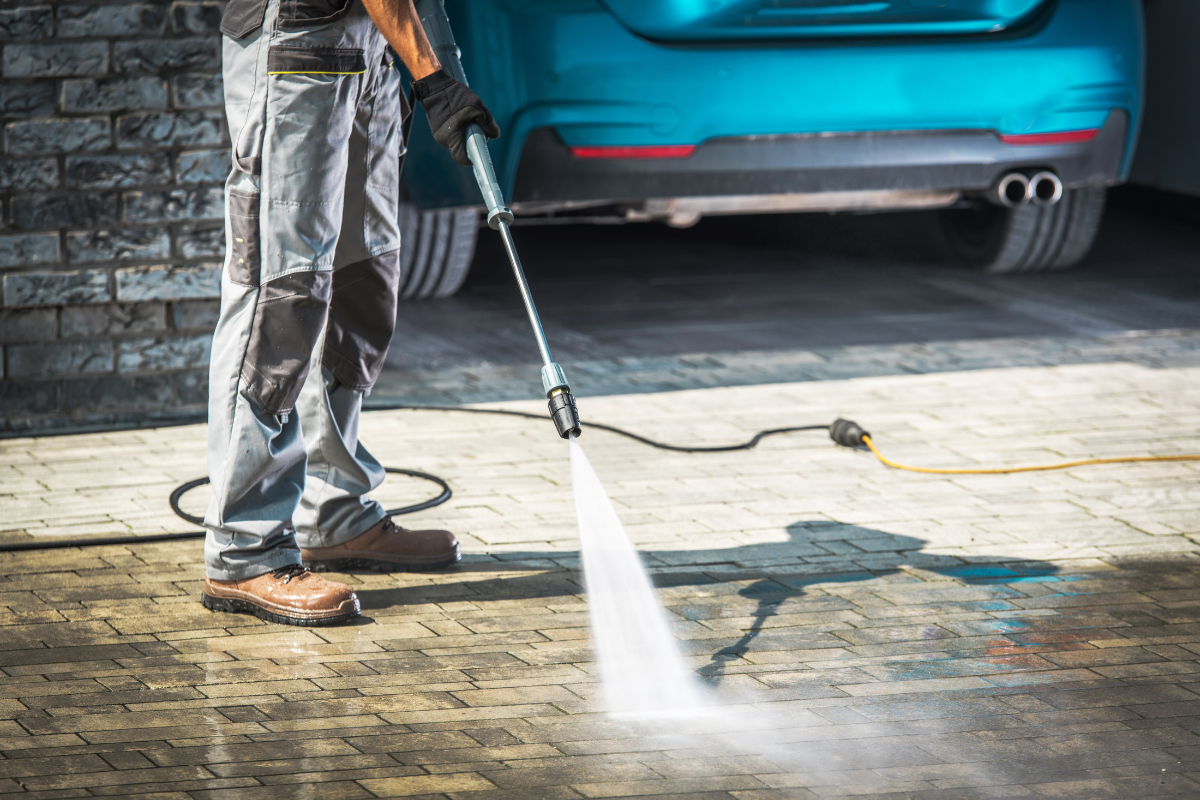
Paver Sealer Types Compared: Water-Based vs. Solvent-Based



Pavers take a beating. Sun bakes them, rain leaches minerals out, tires scuff and track oils, and weeds creep into joints as quickly as you can sweep them out. The right paver sealer protects color, locks down sand, and makes routine maintenance realistic. The wrong sealer creates a cloudy mess, turns slick underfoot, or peels within a season. After years of washing and sealing driveways, pool decks, and walkways across Florida, I’ve come to see sealers less as a finish and more as a system. The chemistry matters, the prep matters, and your specific surface and climate matter even more.
Most conversations start with a simple fork in the road: water-based versus solvent-based. Both can perform beautifully. Both can fail spectacularly if misapplied. This comparison is not about picking a single winner, but about matching the right paver sealer to the need in front of you.
What a sealer actually does
A sealer’s job is threefold. First, it creates a barrier that slows UV fading and staining from oil, food, and tannins. Second, it stabilizes joint sand so the surface resists washouts and weed growth. Third, it affects appearance, from a bare natural look to a richer color pop and gloss. Good products also maintain vapor permeability so moisture that enters the paver can escape. That last part sounds technical, but it is the single biggest difference between a finish that stays clear and one that turns milky after a summer storm.
On a practical level, sealed pavers clean faster. Dirt, algae, and mildew have a harder time taking hold. When we perform paver cleaning in Lutz and nearby neighborhoods, we see unsealed surfaces need aggressive pressure and chemicals, while sealed surfaces rinse clean with moderate pressure and a proper surfactant. This difference compounds over time, which is why sealing is not just cosmetic, it is a maintenance strategy.
Water-based sealers: how they work and where they shine
Water-based sealers suspend acrylic, urethane, or hybrid resins in water. When applied, water evaporates and 1523 Green Meadow Dr, Lutz, FL 33549 driveway pressure washing near me the resins coalesce into a film. Modern versions use crosslinking technology and tighter polymer blends than a decade ago, which has improved durability without relying on harsh solvents.
The biggest advantage is vapor permeability. Properly formulated water-based sealers allow moisture to pass through at a controlled rate. That means fewer instances of whitening after rain, especially on dense concrete pavers or shaded pool decks that hold moisture. The reduced odor and low volatile organic compounds make application friendlier for occupied homes and fast turnarounds. We can seal a patio by noon and the client can grill dinner on it the same evening if weather cooperates.
Appearance options range from natural matte to medium gloss. If you prefer a subtle look that locks in sand and keeps the surface easy to clean without looking “wet,” water-based is often the safer bet. If you want more color enhancement, some water-based formulas include nanopolymers and reactive silica that deepen tones without creating a high build. This matters in places like pool decks, where glare and slipperiness must be managed alongside aesthetics.
When we handle washing and sealing for HOA entrances or long paver drives, we often choose water-based for efficiency. The equipment cleans up with water, overspray risk is lower, and staging is simpler. That translates into consistent results across large areas.
Solvent-based sealers: power, pop, and pitfalls
Solvent-based sealers dissolve resins in a petroleum solvent. As the solvent flashes off, it leaves a denser film with a tighter surface. Historically, solvent-based acrylics delivered the deepest color enhancement, the richest wet look, and strong protection against oil. They still do. They can also be re-emulsified with xylene for spot fixes if a section blushes or if overapplication occurs. Contractors appreciate that kind of field repair flexibility.
That power comes with trade-offs. Solvents penetrate joints and pavers aggressively, which can trap moisture if the substrate is not fully dry. Trapped moisture plus Florida humidity equals milky whitening, a familiar complaint on driveways that were pressure washed in the morning and sealed in the afternoon. Off-gassing is significant, so ventilation and personal protection matter. Some local regulations restrict solvent content, and many homeowners dislike the odor hanging around for a day or two.
Solvent-based sealers tend toward higher gloss and a slicker surface when wet. Anti-slip additives help, but high-build applications around pools need careful testing. Another practical difference: cleanup requires solvents, not water. That slows production and raises costs on bigger projects.
Despite these cautions, I still reach for solvent-based products for specific situations. On older, color-faded pavers where the client wants a dramatic revival, a quality solvent acrylic or urethane-modified system provides the look they want. On driveways with frequent oil drips, the tighter film sheds contaminants better. The key is patience with moisture testing, precise application rates, and a weather window that favors slow, even curing.
Surface types are not all equal
Concrete pavers vary in density, porosity, and pigmentation. Tumbled pavers soak up more sealer and give a softer aesthetic. Smooth, high-density pavers have less absorption and show applicator lines or overlap if you are sloppy. Clay pavers behave differently again, often darker and with variable porosity even within the same pallet. Natural stone and travertine are their own category and often prefer penetrating sealers that do not form a film at all.
When clients call looking for “paver sealing near me,” we start with a simple inspection. I look for efflorescence, rust stains, calcification in joints, signs of previous sealer, and whether the pavers sit in shade or full sun. If water beads up in uneven patterns during the rinse phase of pressure washing, there may be a failing sealer that needs stripping before anything new can bond. Stripping is the job everyone dreads. Solvent-based strippers are messy and time-consuming. If a surface has been over-sealed layer after layer, a reset is the only honest path forward.
On new installs, the conversation includes time. Fresh pavers and polymeric sand need to settle. Washing dust and construction residue off with a careful pressure washing service helps, but I still like a minimum of three to four weeks of weathering before sealing, longer if rain has been constant. Early sealing occasionally locks in construction moisture and leaves ghosting that is hard to fix.
Climate and environment shape the choice
In a humid region like the Tampa area, moisture management trumps everything. Afternoon downpours, overnight dew, and high groundwater keep pavers damp. Water-based sealers are forgiving here. They breathe better and recover with fewer blemishes if a surprise shower hits. On the Gulf Coast, salt spray and mildew pressure also argue for breathable systems that can be cleaned and refreshed on schedule.
Move to a dry, high-UV environment and solvent-based sealers may hold gloss and color pop longer between coats. The faster drying climate reduces whitening risks, and the UV load rewards the denser film. Always think about how water interacts with your site. Is there irrigation overspray every morning? Are there shaded areas that never see direct sun? Is the driveway sloped or flat? Subtle site details drive sealer performance just as much as chemistry.
Appearance goals: natural, enhanced, or glossy
Clients use different words for similar looks, so I keep sample boards in the truck. Natural look means minimal darkening and low sheen. Enhanced means deeper color and a slight wet look without noticeable gloss. Glossy means you will see reflections.
Water-based sealers cover the first two categories well. Several premium options provide strong color enhancement with minimal film build. Solvent-based sealers dominate the glossy end, though there are water-based high gloss products that come close. If slip resistance is a concern, fold that into the aesthetic decision. It is easier to preserve traction with a low-build, matte system than with a glassy film.
One caution: over-application creates most of the visible problems homeowners notice. More sealer does not equal better protection. It equals trapped moisture, hazing, and a gummy feel that attracts dirt. Follow manufacturer spread rates. If a driveway absorbed two thin coats evenly and still looks thirsty, consider a third light coat later rather than flooding it on day one.
Application realities: prep, timing, and technique
Good sealing starts with good cleaning. We begin with a thorough rinse and a calibrated pressure pass, not a blast. If the goal is to preserve joint sand, use a surface cleaner with the right tip configuration to avoid trenching. If joints have failed or weeds have taken the upper hand, plan for resanding. For stains, rust removers and degreasers must be neutralized. Residual acids and alkaline cleaners interfere with sealer bonding and can shift color. On a typical 1,000 square foot driveway, proper prep takes several hours, often more than the sealing itself. When homeowners search for driveway pressure washing near me and go with the cheapest option, the service often skips these details, and the sealer fails prematurely.
Moisture testing is a habit worth forming. Tape a square of plastic down for 20 minutes and check for fogging. Use a moisture meter if you have one, but the plastic test is better than guessing. With water-based products, aim for surface-dry and within the manufacturer’s humidity range. With solvent-based, push for deeper dryness. High humidity stretches cure time, so plan your window. I like sun on the surface for several hours after application to help drive off water or solvent at a controlled rate.
Technique matters. Spray and back-roll gives even coverage and tight edges. Keep a wet edge and work in manageable sections. Avoid pooling in joints. For water-based sealers, light, even coats help coalescence. For solvent-based, steady, overlapping passes at the specified rate prevent lap marks. Wind is not your friend. Overspray on glass or vehicles can become a costly mistake, and solvent fog is hard on lungs and landscaping.
Maintenance life and recoat schedules
No sealer is permanent. Expect a 2 to 4 year maintenance cycle in humid, high-traffic areas for water-based systems, and 3 to 5 years for solvent-based, assuming proper prep and application. Pool decks with chlorine exposure and constant water film tend to shorten any coating’s life. Driveways that see hot tires and brake dust need more frequent attention than garden paths.
Recoat before the sealer fails completely. When color looks flat and water no longer beads uniformly, plan a light clean and another coat. It is far easier to maintain a system than to rescue a neglected one. With solvent-based sealers, recoating usually requires a solvent-compatible product to avoid lifting. With water-based, stay in the same family and manufacturer line when possible. Cross-brand layering works sometimes, but the risk of adhesion problems climbs.
Costs and value
Materials, labor, and prep complexity drive price more than the chemistry alone. Water-based products typically cost slightly less per gallon and save time on cleanup and staging. Solvent-based jobs often require more site protection, slower application, and PPE, which adds labor cost. On average, a professional washing and sealing package lands in a per-square-foot range that reflects local rates, product quality, and surface condition. DIYers can buy decent products, but the risk lies in the prep and weather timing. I have stripped more DIY jobs than I care to count, and stripping doubles the cost compared to doing it right the first time.
From a value standpoint, sealing pays back in reduced pressure washing intensity, fewer weed outbreaks, and slower color fade. If you are comparing bids from a pressure washing service, look closely at the scope: detergent type, efflorescence treatment, joint sand stabilization, number of coats, product brand and solids content, and written recoat guidance. The cheapest number on the page often leaves out the steps that make a system last.
Edge cases and trouble spots
Every season surfaces show up that do not fit the usual script. A few examples help illustrate how to think through tricky situations.
- Efflorescence bloom on a shaded, north-facing driveway: Salt crystals keep forming weeks after cleaning. Here, water-based sealer with high breathability plus a dedicated efflorescence remover and longer dry time between steps outperforms solvent-based. Rushing a glossy coat onto this surface almost guarantees whitening.
- Pavers with a history of multiple solvent coats: The surface looks plasticky and patchy. You can reheat with xylene to reflow a section, but the honest fix is a full chemical strip and reset. Once stripped, a breathable water-based system reduces the chance of repeating the cycle.
- Pool deck asking for high gloss: Safety trumps shine. Two thin coats of an enhanced water-based finish with a fine anti-slip additive gives a richer tone without the skating rink feel. If the client insists on gloss, mock up a test section, wet it, and walk it in the same sandals they use daily.
- Driveway under oak trees: Tannins and sap can stain. Here, a denser film helps with stain resistance, so a carefully applied solvent-based sealer might be the right call. Build in a maintenance rinse schedule and a gentle cleaner to keep organic stains from baking in.
- Clay pavers in a historic district: Color is deep and varied, and the surface is sensitive to heavy films. A penetrating enhancer or a low-build water-based sealer preserves authenticity while still shedding dirt.
How pressure washing fits into the plan
Searches for pressure washing or driveway pressure washing near me often bring up generalists and specialists side by side. The difference shows in how they handle water pressure, chemistry, and post-wash neutralization. High pressure alone is not cleaning, it is erosion. We aim for the lowest pressure that lifts dirt when paired with the right detergent, then rinse thoroughly and reintroduce clean joint sand where needed. That creates a stable base for sealing.
On paver cleaning in Lutz and nearby communities, irrigation overspray and well water rust are common. Rust removers need precise dwell times and thorough neutralization, or they will react with sealer and cause discoloration. We test a small section, watch for color shift, then proceed. After the wash, pavers need to dry to the level demanded by the chosen chemistry. This is where schedule discipline pays off. On large properties, we often split cleaning and sealing over two days to avoid shortcuts.
Comparing the two in plain terms
If you prefer a quick rule of thumb, think about your priorities.
- Choose water-based if breathability, low odor, safer application, and a natural to softly enhanced look top your list. Especially good for humid climates, pool decks, and properties with frequent moisture exposure.
- Choose solvent-based if you want strong color pop, higher gloss, and slightly stronger resistance to oil and stubborn stains, and you can control moisture with careful scheduling. Best on driveways wanting that vivid wet look and in drier climates.
Either way, insist on a system: proper prep, product matched to paver type, correct spread rates, and realistic maintenance.
What to ask a contractor before you sign
Most problems can be avoided with a short, focused conversation up front.
- What specific product line will you use, and why for my surface and climate?
- How will you handle efflorescence, rust, and oil spots before sealing?
- What is your plan for moisture testing and weather timing?
- Will you resand joints, with what sand, and how will you stabilize it?
- What is the recoat strategy, and what signs should I watch for over time?
If the answers are vague or rushed, keep looking. A professional pressure washing service should be able to describe each step in detail and tailor recommendations to your property.
A practical path forward
Walk your surface in the morning after irrigation, and again mid-afternoon after sun. Note the wet spots and shaded areas. If you are set on a high gloss finish but your site stays damp, reconsider or plan for a drying period that stretches over a day or two. If your preference leans natural and maintenance convenience matters, a premium water-based sealer offers a strong balance. If you want that showroom driveway look, a solvent-based product can deliver, provided the prep and conditions are right.
The best indicator of success is not the label, it is the discipline of the process. Clean thoroughly without scarring the surface. Neutralize chemicals. Let the substrate reach the right dryness. Apply thin, even coats. Respect the cure. Then keep up with light maintenance, quick spill cleanups, and periodic rinses. Done this way, sealing is not a one-time event, it is a rhythm that keeps your investment looking the way you imagined it on install day.
When you weigh water-based against solvent-based, you are not picking teams. You are picking the right tool for your set of pavers, in your climate, with your goals. If you want a second opinion, bring in a local pro. A short site visit beats hours of guessing, and a few careful choices today will save you a round of stripping and do-overs a year from now.
Bulletproof Pavers
Address: 1523 Green Meadow Dr, Lutz, FL 33549
Phone: (813) 401-0693